📌 What is this lesson about?
This lesson is all about mastering the art of creating effective email campaigns tailored for recruitment. From reaching out to potential candidates to sending out job offers, we’ll cover it all.
📌 What will you learn by the end of this guide?
- The significance of outreach campaigns in recruitment.
- Steps to craft compelling recruitment emails.
- Examples of outreach message templates that we at ContactOut personally use 🐸
- Best practices to remember when sending out recruitment emails.
📌 Why is it important?
Email remains a preferred method of communication for 85% of recruiters. It’s a powerful tool to engage potential candidates, keep them informed, and ultimately, get them on board. An effective email can make the difference between a candidate considering your offer or moving on to another opportunity.
📌 Here’s the step by step to do it:
1. Understand Your Audience:
- Research: Before crafting your email, spend time understanding the candidate’s background, skills, and past roles. Platforms like LinkedIn can be a goldmine.
- Segmentation: Group candidates based on roles, experience levels, or industries. This allows for more personalized outreach.
2. Craft a Catchy Subject Line:
- Relevance is Key: Mention the role or a mutual connection.
- Create Urgency: Phrases like “Immediate Opportunity” can prompt quicker responses.
- Keep it Short: Aim for 6-10 words to ensure it’s mobile-friendly.
3. Personalize Your Message:
- Use Their Name: It’s simple but effective. Avoid generic greetings.
- Mention Mutual Connections: If you have mutual acquaintances or colleagues, bring them up.
- Highlight Specifics: Talk about a particular project they worked on or a skill they possess.
✅ Use ContactOut’s AI Connection Request Messaging feature to write personalized notes in seconds.
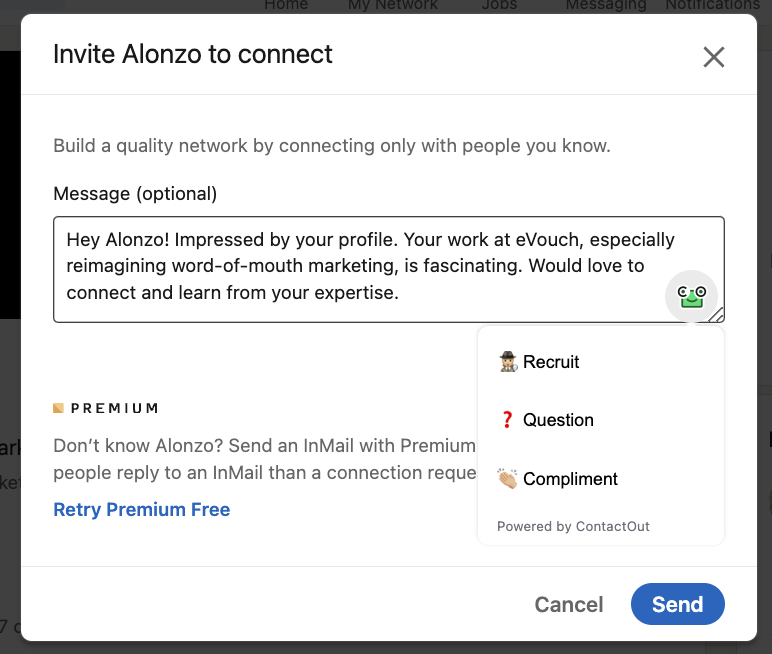
✅ Use ContactOut’s custom icebreakers via Chrome extension.
Copy the one you like the most, tweak, or click “Refresh” until you land on the perfect message to engage with your audience.
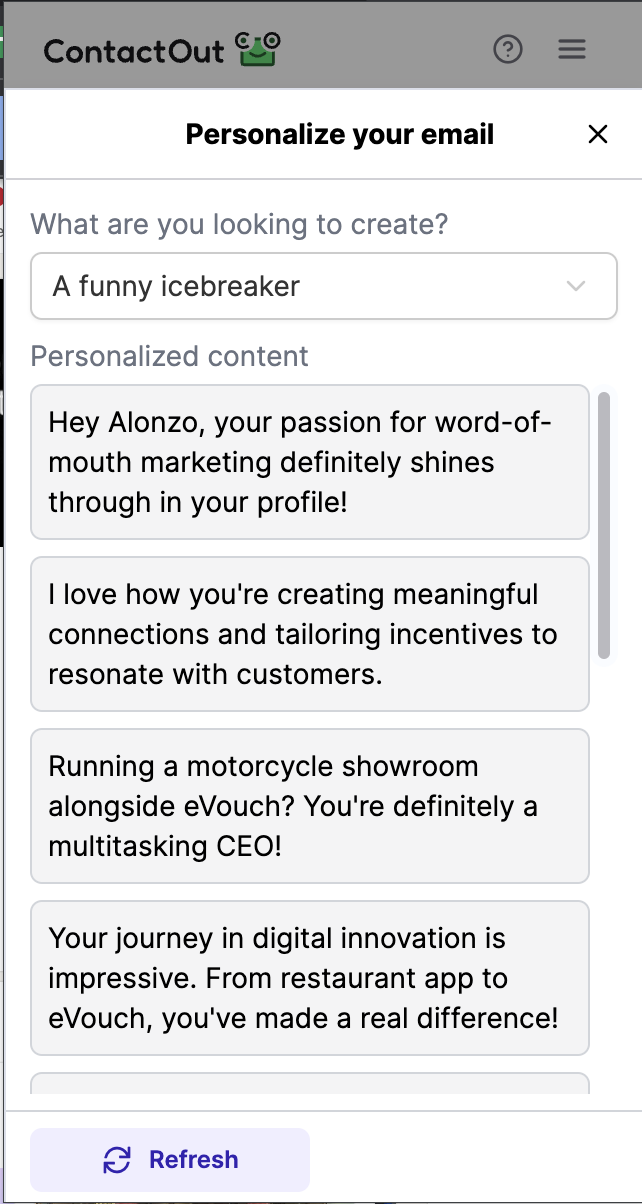
4. Be Clear and Concise:
- State the Purpose Early: Don’t bury the lead. Mention the job opportunity or interview invite in the first few lines.
- Use Bullet Points: If you’re listing job responsibilities or benefits, bullet points can make your email more readable.
5. Include a Call to Action (CTA):
- Be Direct: Clearly state what you want them to do next.
- Offer Multiple Options: Give them a choice, like different interview slots.
6. Proofread:
- Use Tools: Platforms like Grammarly can help catch errors.
- Read Aloud: Sometimes, reading the content aloud can help identify awkward phrasing.
7. Follow Up:
- Set a Reminder: If you haven’t heard back in a week, send a follow-up.
- Keep it Friendly: A simple “Just bringing this to the top of your inbox” can work wonders.
📌 Here’s an example of it:
👋 We’re spilling the beans – here are outreach messages templates that we use personally here at ContactOut! (🔗 below)
Connecting on LinkedIn:
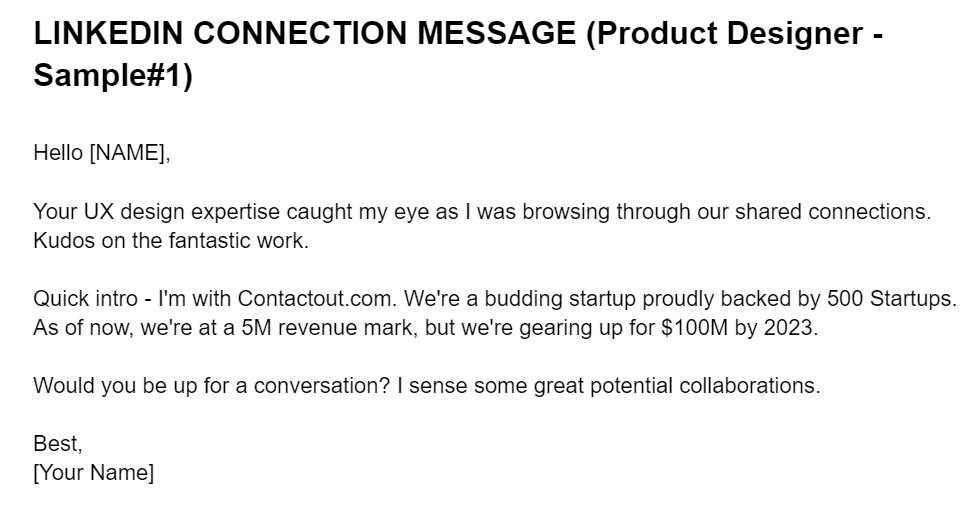
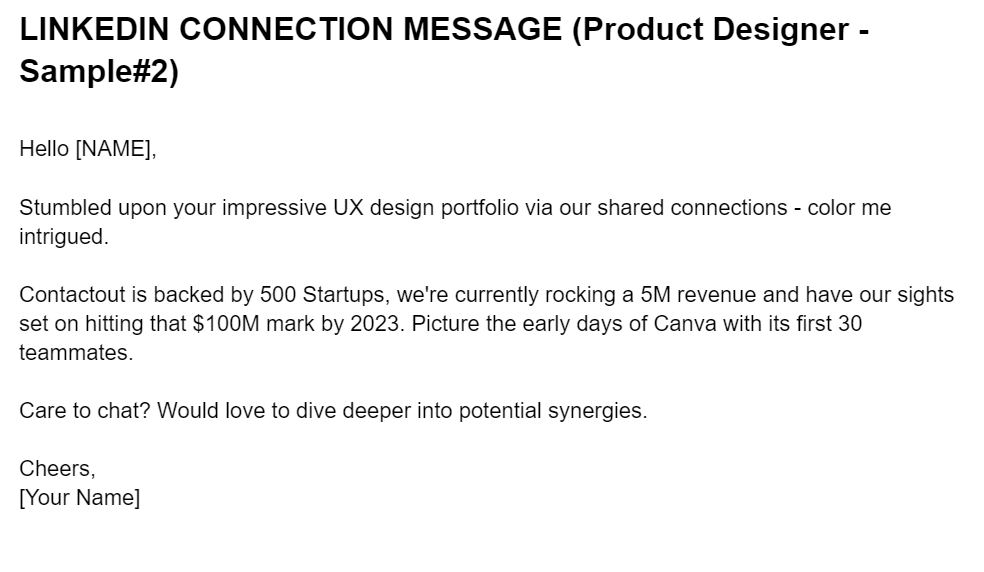
Reaching out via Email:
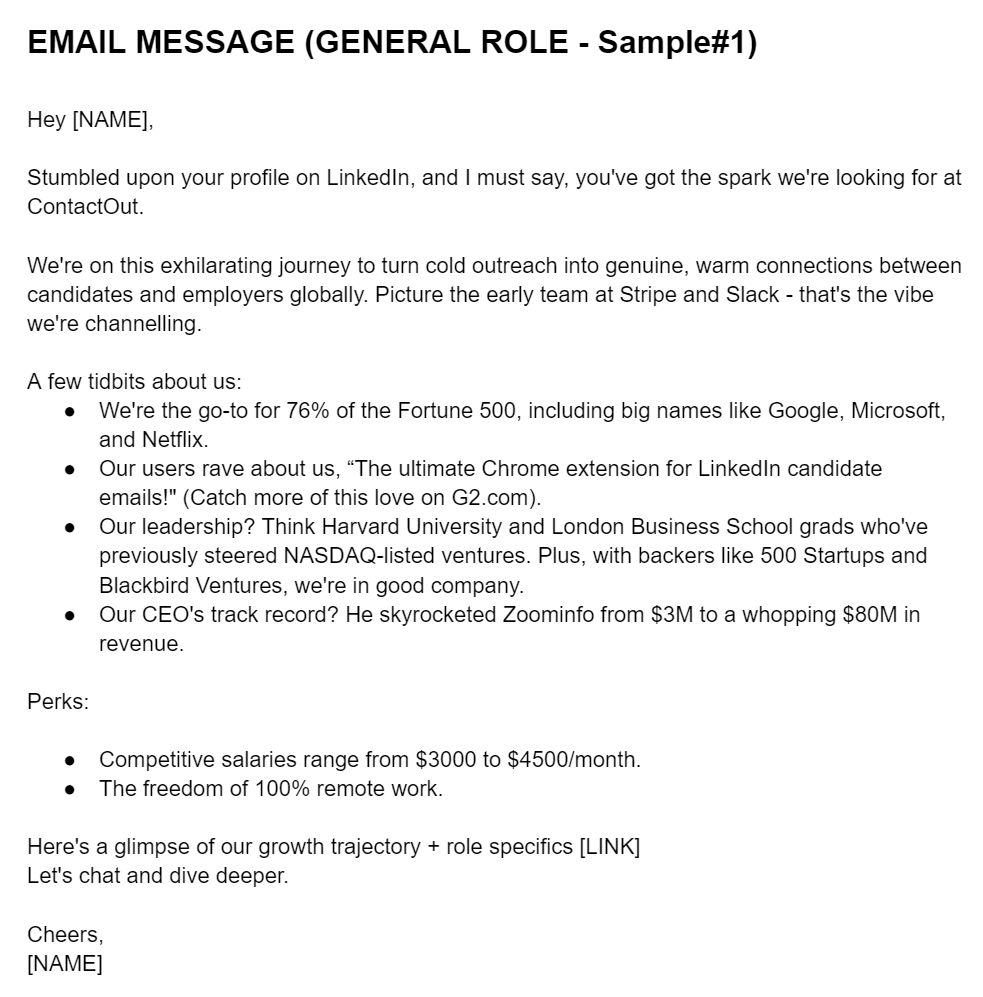
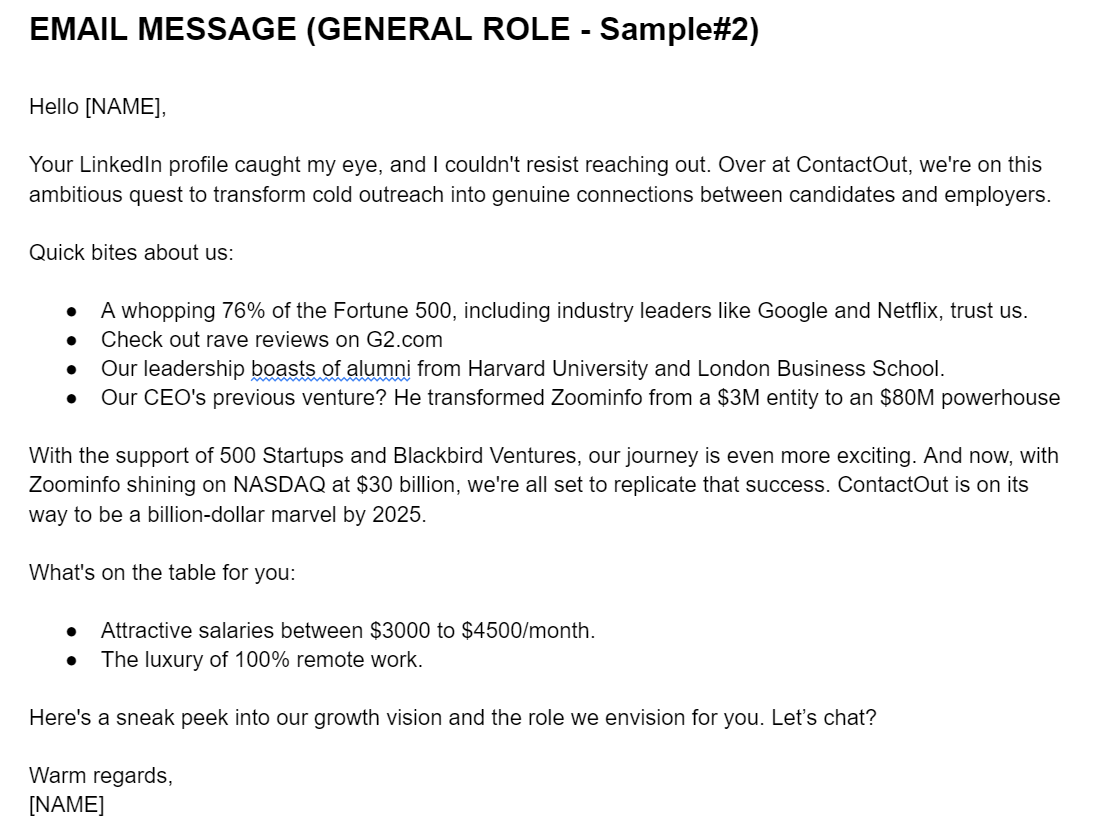
Following up on Email:
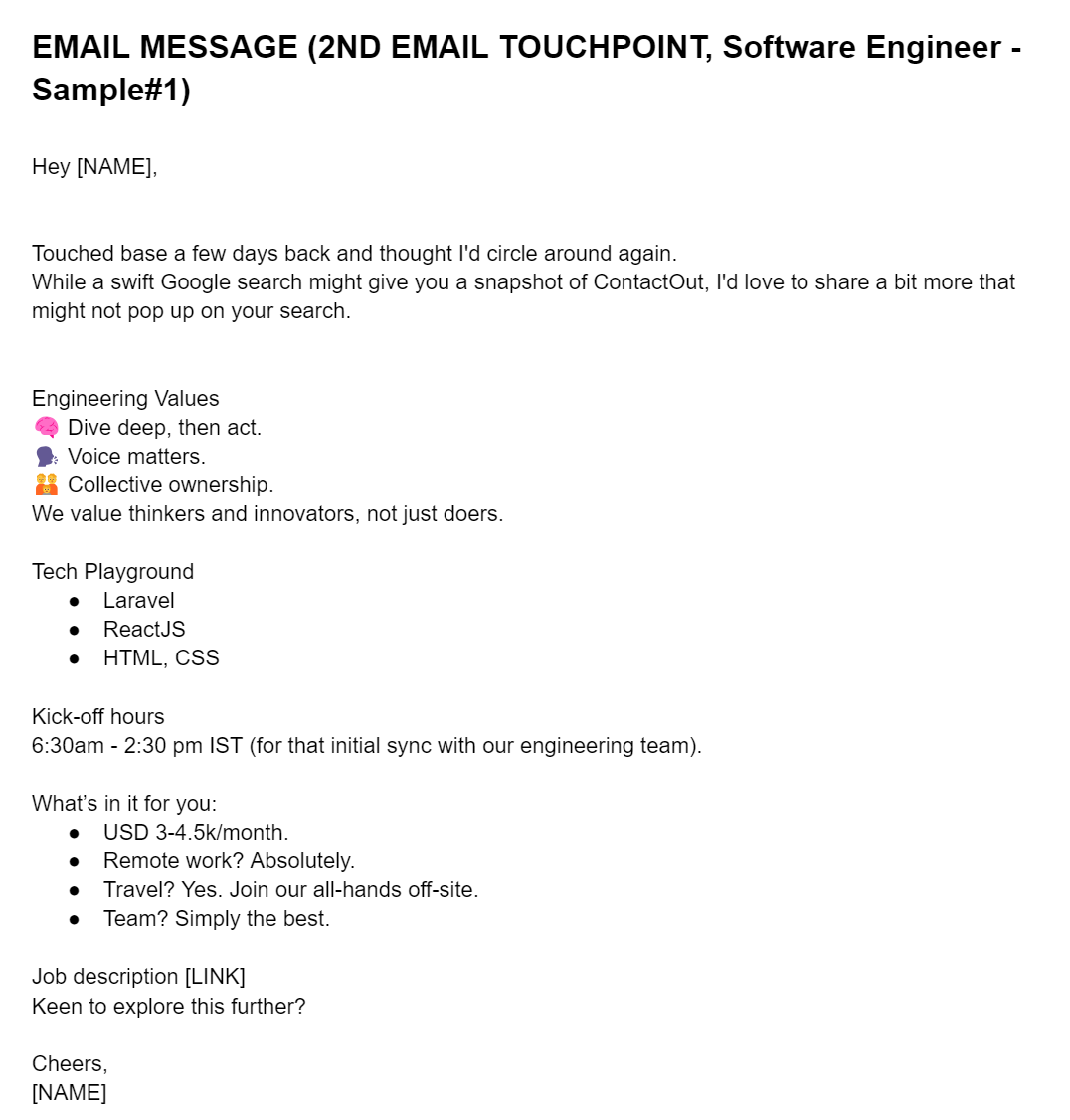
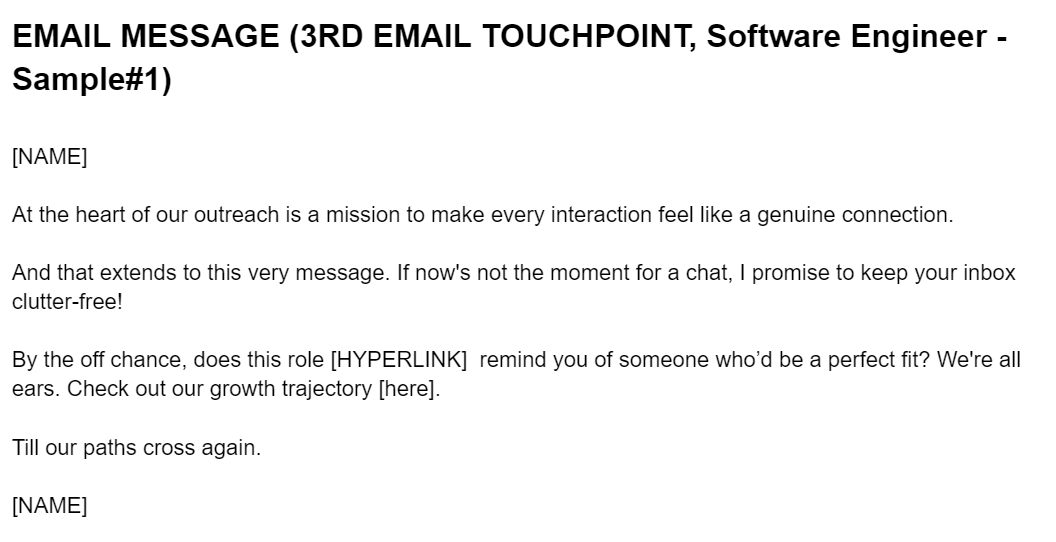
📌 Next steps:
1. Segment Your Candidate List:
- Use tools or software to categorize candidates based on skills, experience, or roles.
- This ensures you’re sending the most relevant emails to each group.
2. A/B Test Different Email Templates:
- Create two versions of the same email with slight variations in subject line, content, or CTA.
- Send them out to different segments and track which one gets a better response.
3. Monitor Email Metrics:
- Open Rates: This tells you how effective your subject line was.
- Response Rates: This indicates the effectiveness of your email content.
- Feedback: If candidates are consistently asking certain questions or seem confused, tweak your emails accordingly.
4. Iterate and Improve:
- Based on the feedback and metrics, continuously refine your email strategy.
- Stay updated with industry trends and adjust your approach as needed.
5. Engage Beyond Emails:
- Consider other touchpoints like LinkedIn messages or even a quick phone call.
- Remember, the goal is to build genuine relationships with potential candidates.
📌 Further resources:
- Our outreach message templates
**🐸 Our own template!** - 37 Free Recruiting Cold Email Templates
- Email Templates for Recruiters
- Recruiter Email Templates
- Recruiting Email Tips
- 6 Hiring Email Templates You Should Steal Right Now












